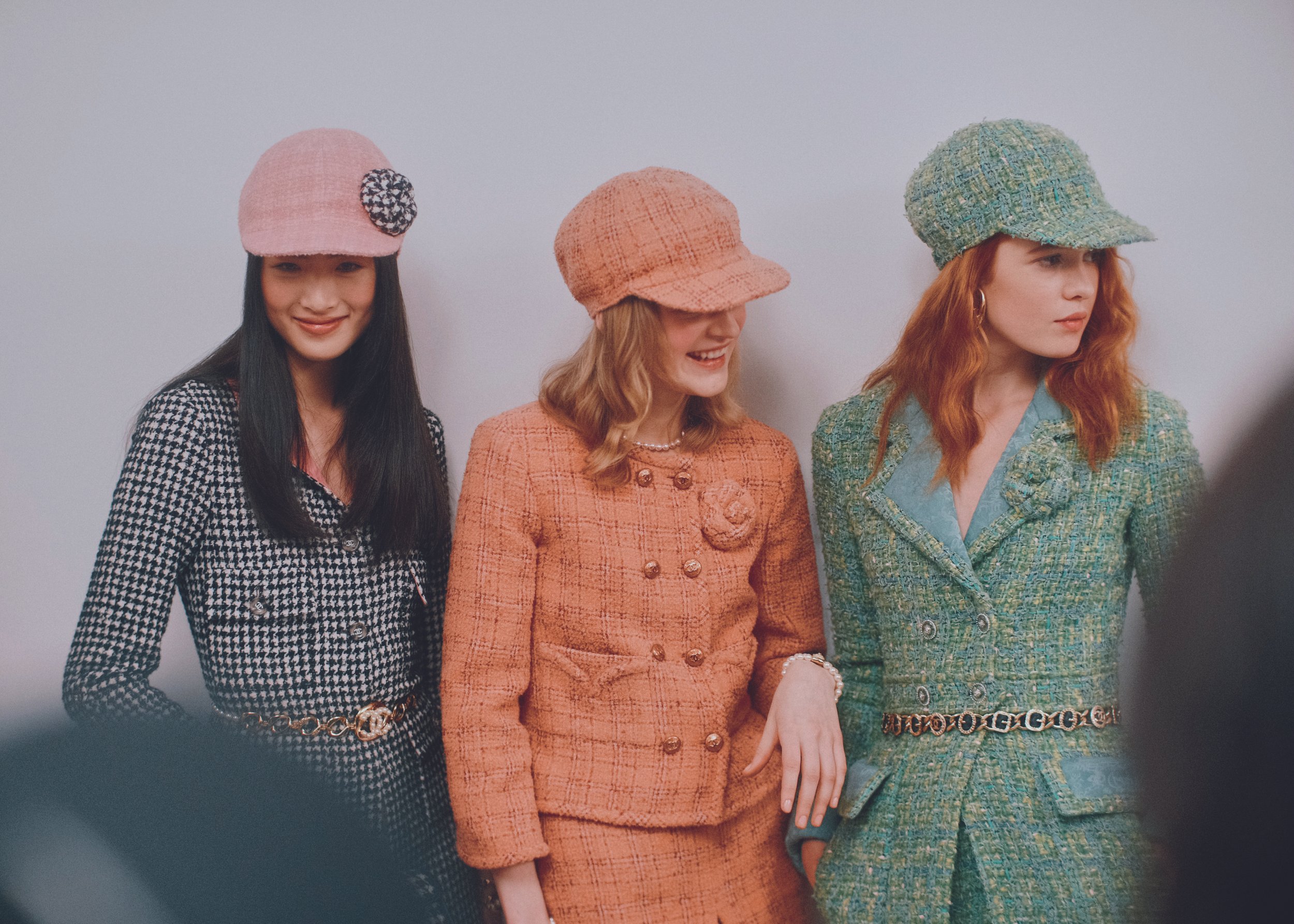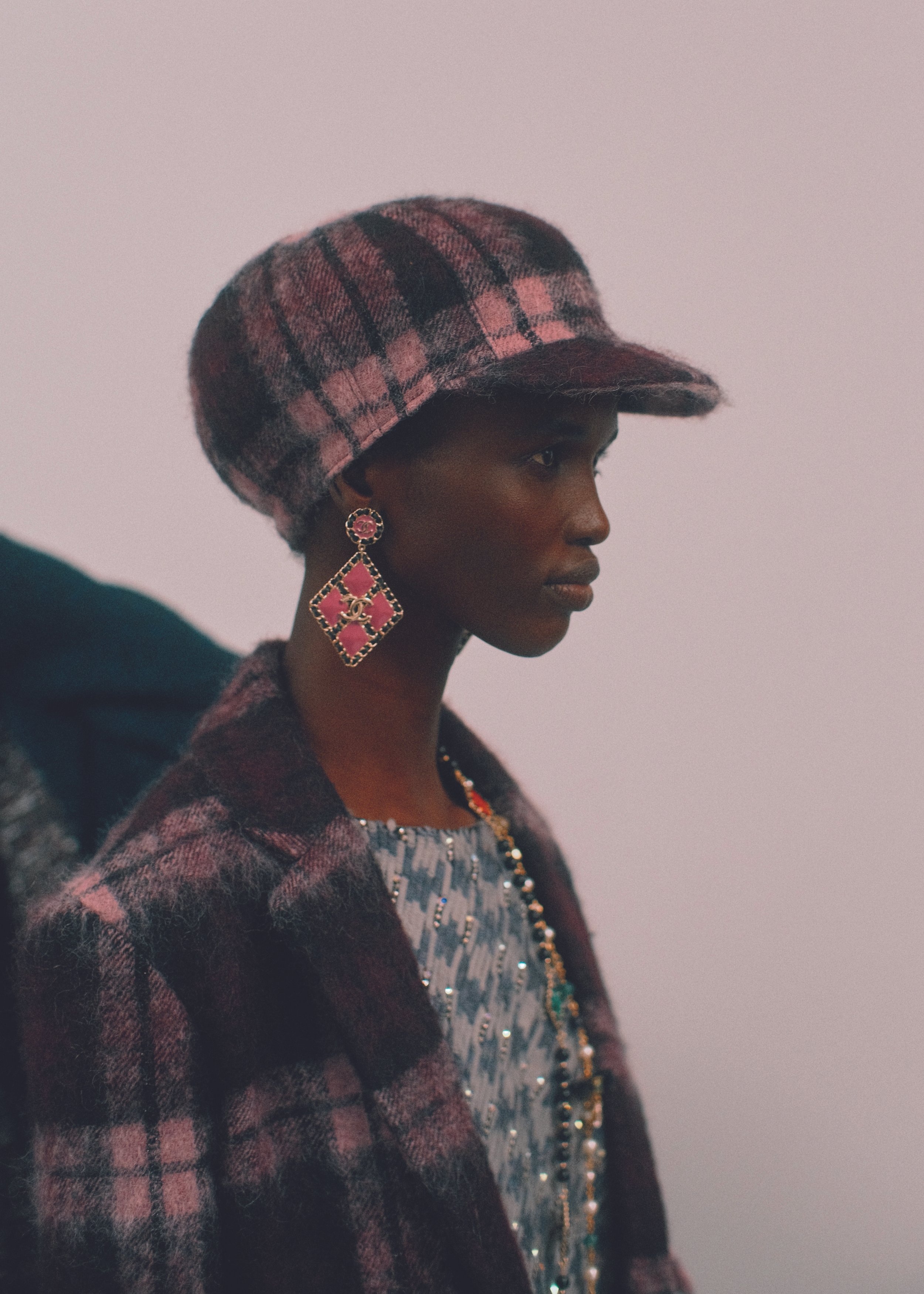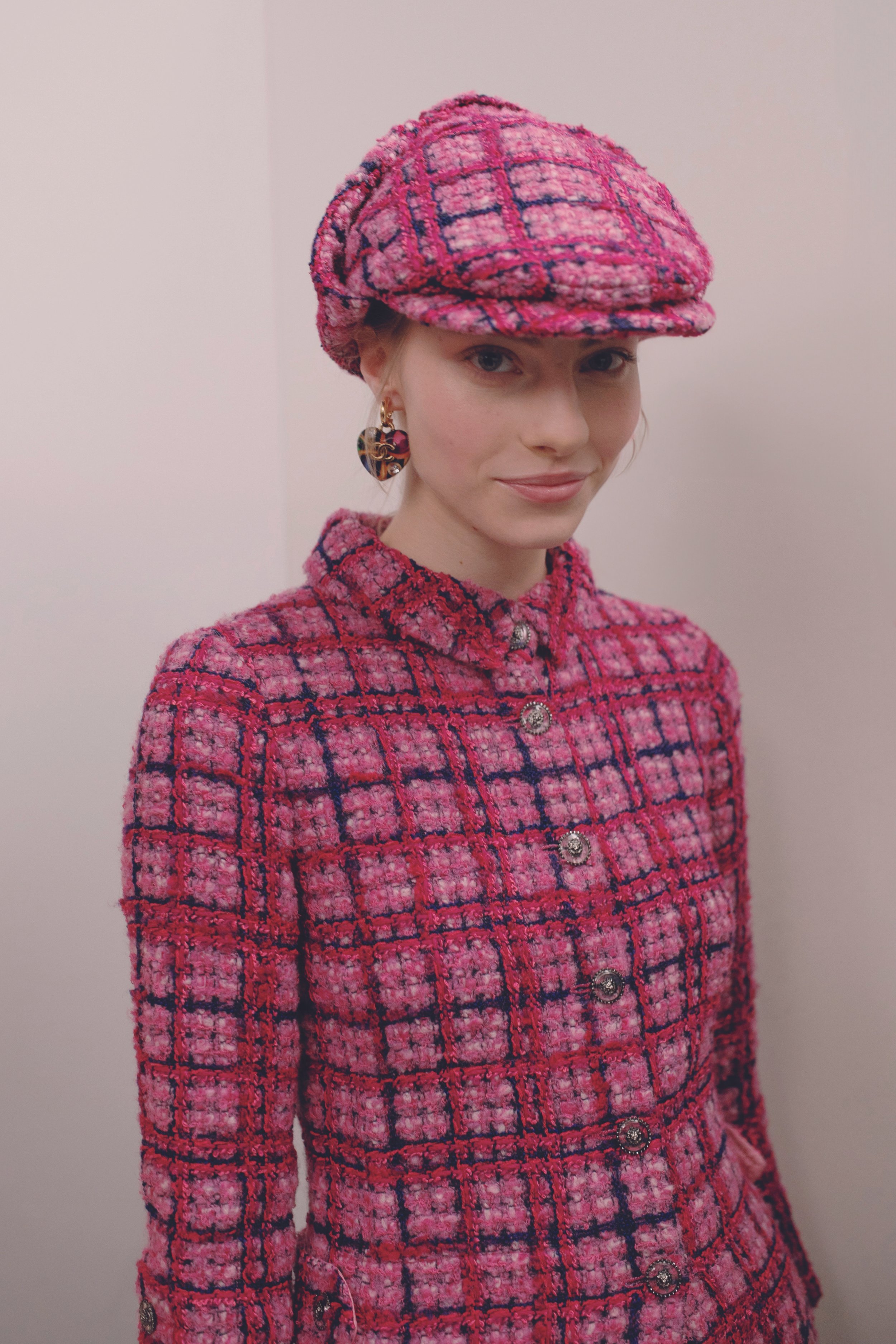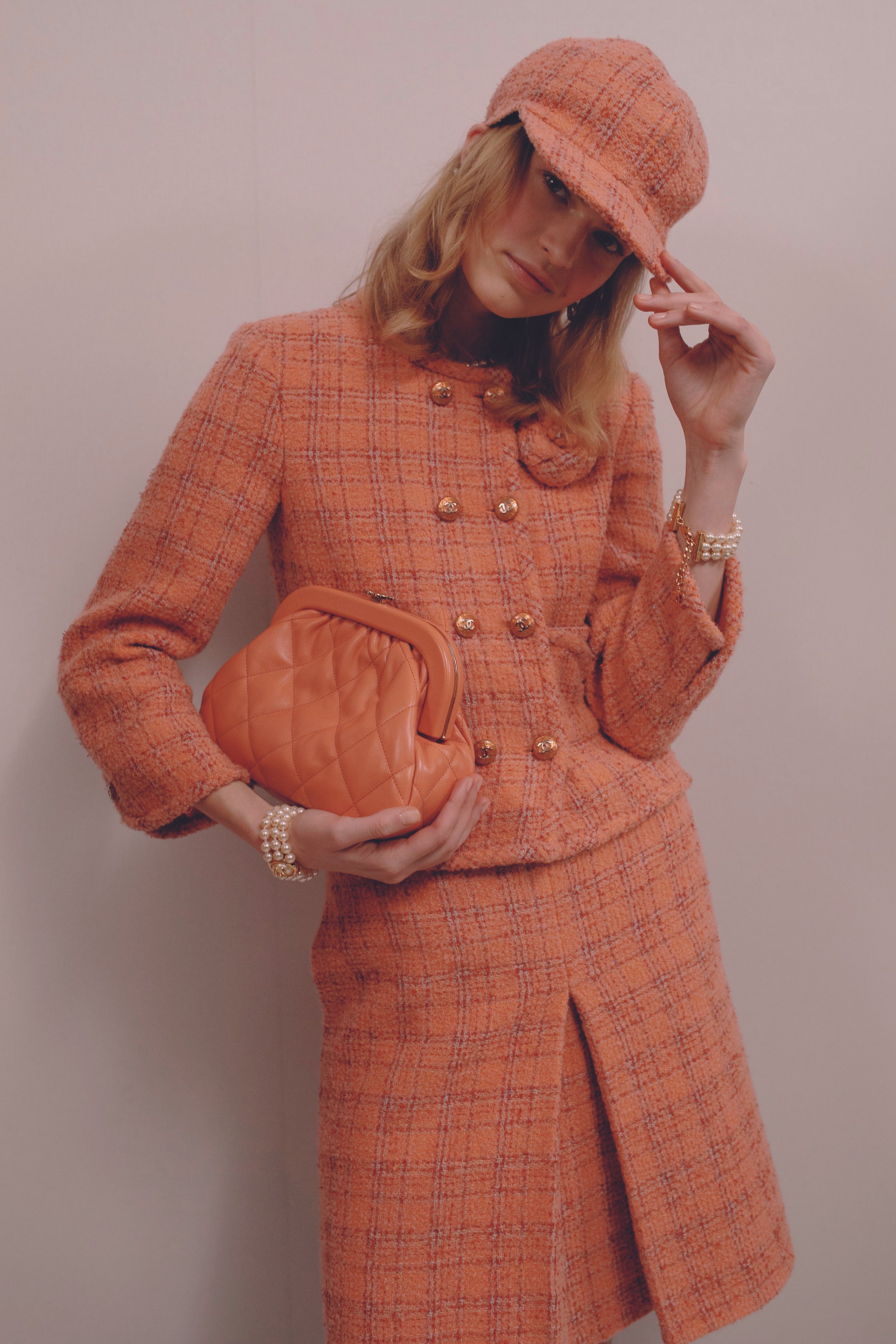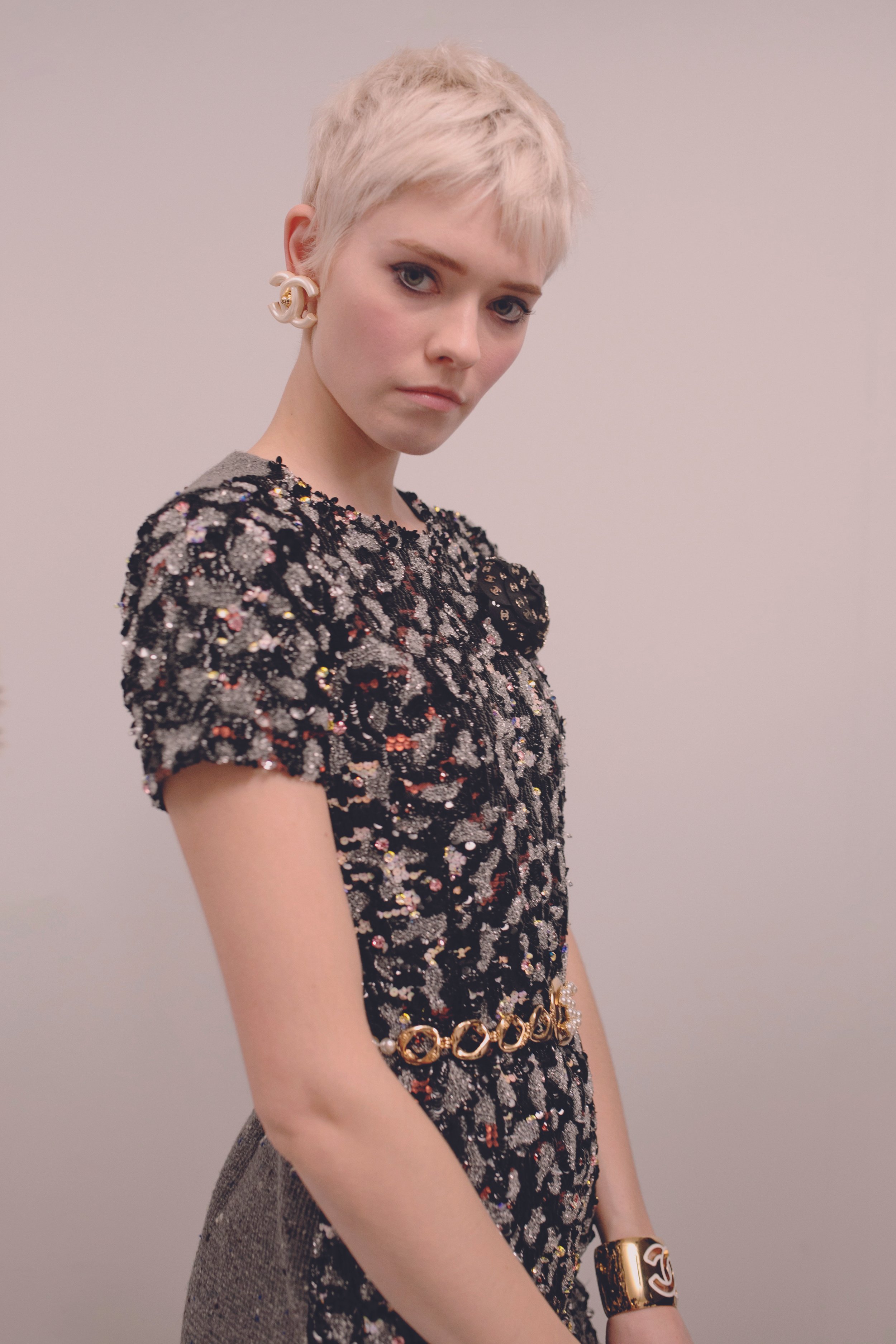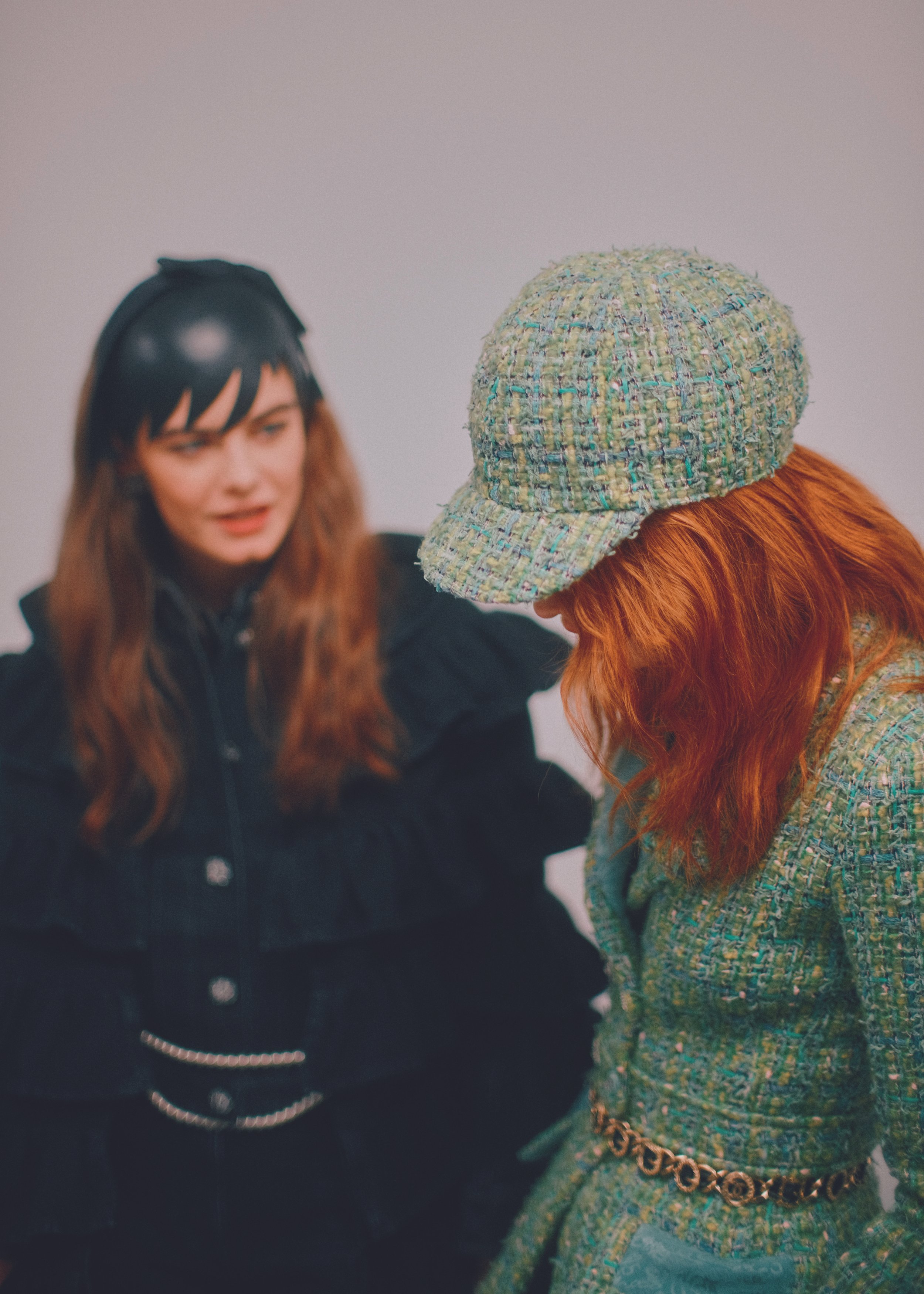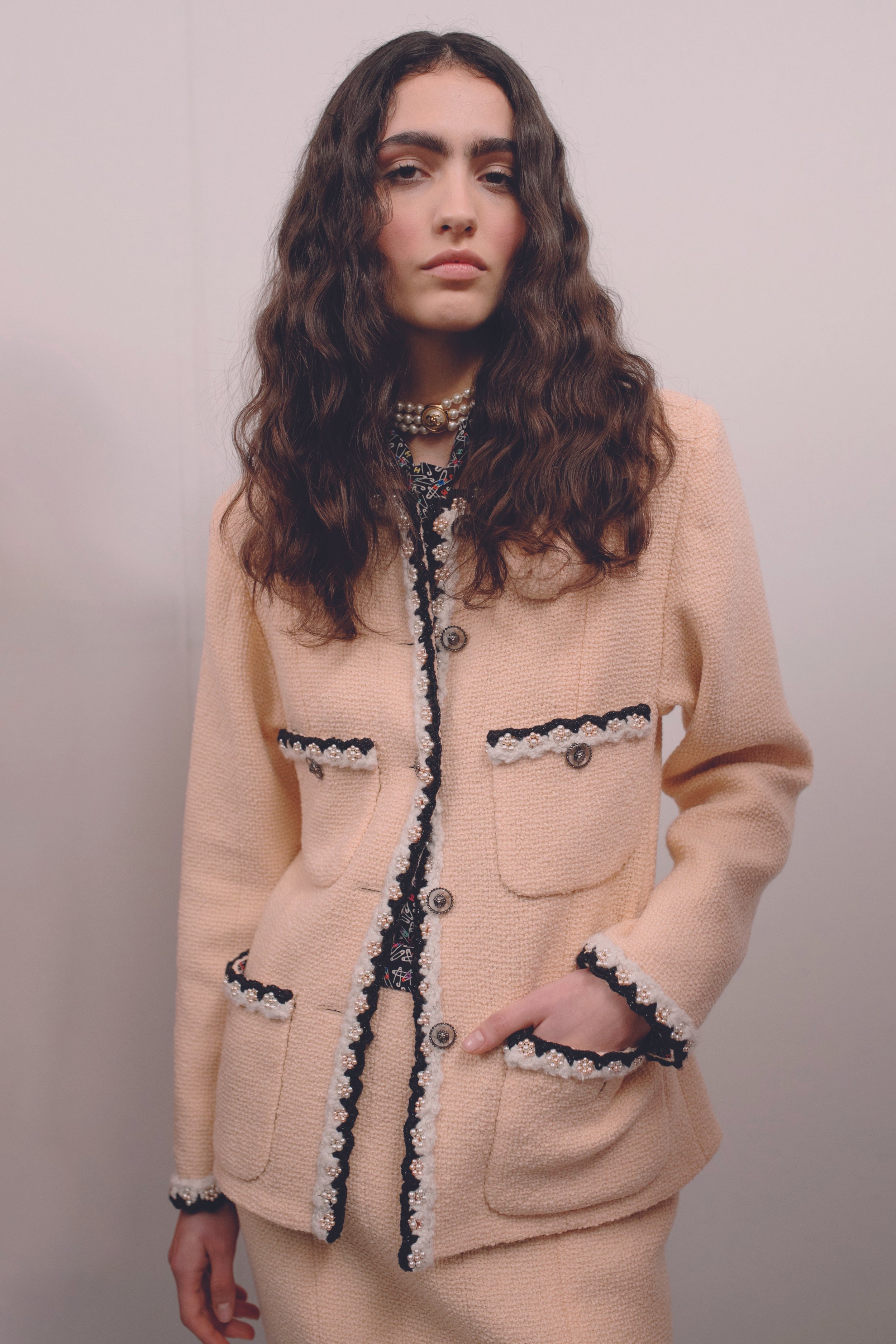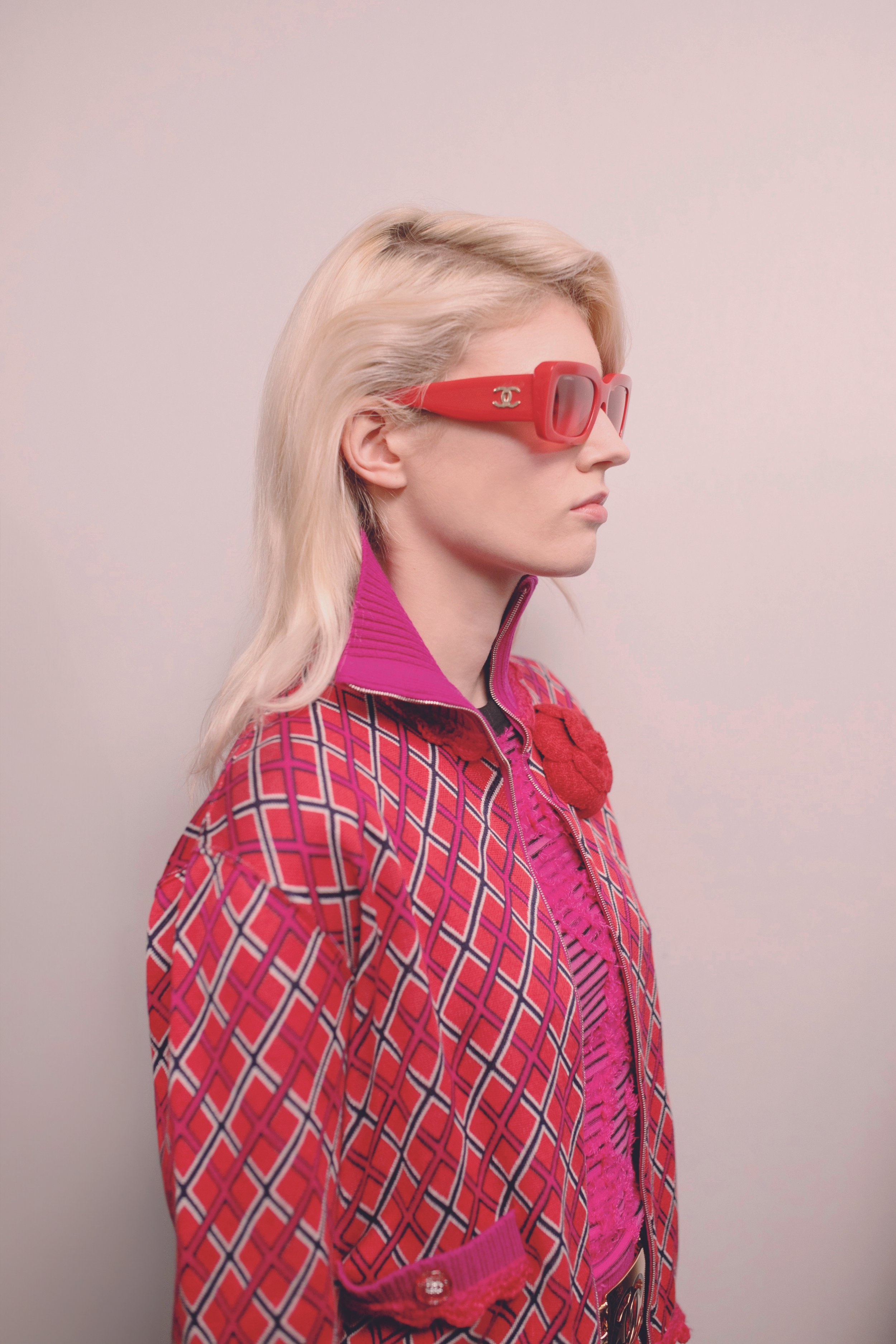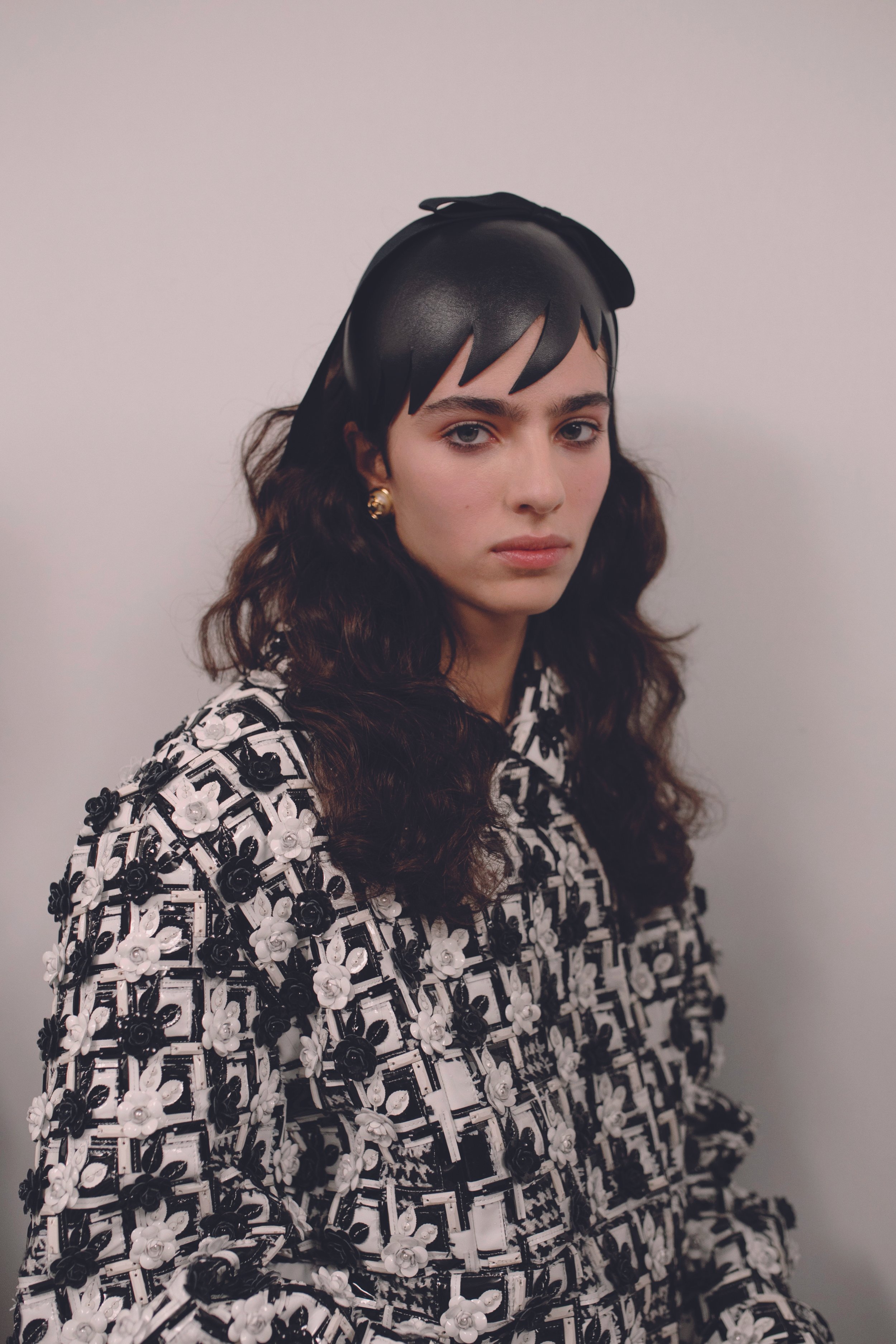Chanel’s Manchester Métiers d’Art extravaganza, signposted by Susie Lau’s 24 hour diary.
Chanel chose Manchester as the location for its latest Métiers d’Art extravaganza. Susie Lau was there to gauge the reaction from curious locals and VIP guests alike when French luxury and couture handcrafting converged in a Northern English city renowned for its mighty subcultural and musical heritage.
On the day of the Chanel Metiers d’Art show in Manchester, we were stood in the pissing rain, drinking Vimto (a sugary, vaguely blackcurrant flavoured cordial) and being educated about the history of radical movements in the area. One of our city guides was playing us a YouTube video of the Vimto song and encouraging a group of seasoned fashion journalists to sing along, while the other – who turned out to be a former child actor from the locally based soap Coronation Street who was embroiled in tabloid scandal for possession of weed at the age of 13 – was animatedly telling us about how Vimto was invented in Manchester in 1908 an antidote to alcoholism, to illustrate both the litany of firsts and the progressive political developments that the city has witnessed. This was the weird and wonderful realm that Chanel had surreptitiously taken us to, in the run-up to what was a highly anticipated but also highly puzzling show, as the question on everyone’s lips was: ‘Why Manchester?’
Chanel’s announcement that it had chosen Manchester as the location for the annual showcase of its Parisian specialist savoir-faire houses had already raised a few hackles, particularly in the UK. You’re having a laugh! It can’t be! Chanel in Manc?! Local IG accounts became fervent with activity in tracking down the location of the show and any nuggets of information that they could glean about it, with plenty of rumours being bandied about (the best one being a Chanel takeover of the old Coronation Street set with long-serving soap characters Bet Lynch (Julie Goodyear) and Ken Barlowe (William Roache) in attendance). Weeks before the show, when construction began on Thomas Street in the Northern Quarter, revealed to be the venue of the show, locals really started paying attention. The comments online ran along the lines of ‘Must have mislaid my invitation in the post!’ and ‘Let me in, luv’ as the sheltered glasshouse structure, dubbed ‘the Chanel Tunnel’, started being erected. Then there was the forensic analysis of how local businesses were to be compensated for the closed-off streets and consequent loss of trade, and even whether residents would be allowed to go onto their own balconies to watch the show. All of this chatter served to illustrate how intensely proud and protective Mancunians are of their city; it also revealed their self-effacing attitude. ‘Most of the Northwest just can’t quite believe this is happening in Manc,’ said a follower on my Instagram.
The ‘Why Manchester?’ question quickly gave way to ‘Why the hell not?!’ as our Corrie actor guide regaled us with anecdotes and fragments from the city’s rich history. ‘Everything came from here,’ he said wryly. ‘We’re a city of firsts.’ The first city to be industrialised on a massive scale. The first city to have a passenger-carrying railway. Then a century and a half later came the postindustrial pop-cultural music revolution of Madchester – that was the primary reason for a purported visit by Virginie Viard, Chanel’s creative director, over the summer, during which she set her heart on Manchester. So many innovative bands emerged from the city around that period – Joy Division, New Order, Stone Roses, the Smiths, Oasis – and it was the first city in the UK where house music took hold, championed by legendary nightclubs like the hallowed Haçienda. All powerful inspiration for a fashion house founded by a women who against all societal odds became the most modern designer of all time, who consistently innovated amid adversity. Turns out Coco Chanel and Manchester have more in common than one might think.
Coco’s connections to both Manchester and the region become less tenuous the more you dig into the subject. As highlighted in the recent blockbuster exhibition Gabrielle Chanel: Fashion Manifesto at the Victoria & Albert Museum, Chanel’s ties to the North of England were established early on when Chanel UK established a factory in Huddersfield as early as the 1930s, as well as buying fabrics like lace from Nottingham and velvets from Manchester. The city was after all known as ‘Cottonopolis’ as it was the primary exporter of cotton worldwide, and Chanel happened to be a big fan of this simple fabric and its versatile qualities. Tweed, which was to be the main protagonist in the Manchester Metiers d’Art show, was also a resolutely British discovery. In nearby Eaton Hall in Cheshire, Coco borrowed tweed jackets from her lover of ten years, the second Duke of Westminster, falling in love with ‘Le Style Anglais’ and taking elements like shooting jackets and the waistcoats of liveried footmen and incorporating them into her collections.
Viard’s reign as Chanel’s creative director has often been defined by realism and approachability over concept and fantasy, which is perhaps closer to Coco Chanel’s original intention to emancipate women from corsetry and gendered limitations with a more free-flowing silhouette. Therefore when it came to staging the show in Manchester, you instantly recal Chanel’s famous quote: ‘Fashion is not something that exists in dresses only. Fashion is in the sky, in the street; fashion has to do with ideas, the way we live, what is happening.’
We entered the show area through the Disorder bar and then onto Thomas Street under the glass canopy, where everything was as it always has been: a redbrick patchwork of former merchants’ houses and weavers’ cottages dating back hundreds of years. Today its links to the city’s textile history are no longer apparent, as guests milled about between the street’s retro Seventies-era stationery shop, tattoo parlour and open bar at the The Bayhorse Tavern, where Hugh Grant could be seen chatting with Tilda Swinton. Meanwhile the Gallagher sprogs were holding court while being asked inane questions by journalists about whether they thought Oasis would be on the show soundtrack. Posing over a beer keg outside the pub, Chanel ambassador Kristen Stewart was overheard saying, ‘I feel ashamed that I’ve not been to this city before.’
But true to Manc form, the festivities weren’t restricted to within the Chanel zone. Earlier in the evening, a local brand was trying to hijack the show by handing out T-shirts emblazoned with the word ‘Gentrification’ adorned with Chanel’s double-C logo. Around the corner, the Love Boutique sex shop was advertising Kim Kardashian sex tapes (she was rumoured to be attending) ‘sponsored by Chanelle (the parrot not the brand)’. That wasn’t the only wild rumour, as a Kate Moss lookalike was spotted at the Ancoats branch of budget supermarket Aldi, stirring up more social-media goss. During the show and after there was karaoke to be had at The Millstone where they chalked up a sign to welcome punters from Chanel. To be honest, you’d almost be disappointed if the locals didn’t roll out their own red carpet for what must have seemed like the strangest and yet most exciting occurrence in their own backyard.
Once we’d sat down on the park pub benches and beer-barrel stools lining the rain-lashed street, the show finally got going to a soundtrack of Soft Cell, The Fall and Cilla Black (our Cilla was Liverpudlian, but let’s not split hairs): an onslaught of tweed, and noticeably devoid of overt embellishment. The Dolly Bird tweed ensembles in bright poppy shades of orange, turquoise, mint green and pink, with A-line above-the-knee or miniskirts and topped off with mod Beatles caps, looked like they could have walked straight out of the many vintage shops of the Northern Quarter which, unlike their Y2K focus of their London counterparts, have always had a strong devotion to the 1960s. The upbeat palette was almost like a colourful riposte to the city’s weather, which did indeed bring us rain in spades. That mid-century factory-girl-on-the-razz vibe then morphed into Eighties New Wave club kids in black patent and DIY vinyl badges, as well as a Haçienda artwork-referencing yellow, black and white tweed. The loose elongated cardigans that Coco Chanel once favoured from her days at Eaton Hall came embellished with distressed camellias or rendered in autumnal tones inspired by the English countryside. Save for the more obvious references to Manchester in the form of footie graphic jumper and scarf combos, it was a characteristic attitude of the North that Viard had married with the language of Chanel.
You could also see the parallels between the pride of Mancunians, who wherever possible were involved in the organisation and making of the show, and the tireless and often invisible hands of Chanel’s craftsmen undertaking Lesage’s embroidery, Lemairé’s featherwork, Goossens’ goldsmithery, Lognon’s pleatwork, Massaro’s shoemaking and Maison Michel’s millinery – all of whom are housed under one great craftwork roof in le19M, a grand new building on the outskirts of Paris. In the exhibition Manchester Modern: Past Present Future – installed immediately after the show, in the converted Victorian bathhouse where the afterparty was held – artisans from Le19M were applying embroidery techniques to a map of Manchester, against a backdrop of photographs of Manchester scenes by Alasdair McLellan, Martin Parr and Kevin Cummins. The exhibition was a reminder of a Manchester that is constantly looking forward and not just resting on its rich cultural past, showcasing young creatives like photographer Alina Akbar and ambitious entities like Aviva Studios, a sprawling local multimedia arts hub.
Critics might say Chanel were capitalising on the ‘grit’ of a city gripped by a cost of living crisis and rising homelessness. But conversely, where’s the originality and impetus in setting a show in a predictable upper-crust English house that perpetuates yet more parochial Downton Abbey, Upstairs Downstairs narratives that don’t reflect the reality of Britain today? Or taking us to yet another show in the capital, when the fashion industry is already unabashedly London-centric? The evening before the show, guests were either taken to watch a footie match (Manchester United v Chelsea) or descended upon a working men’s club. Call it ‘grit tourism’ if you like, but there will be nothing funnier than seeing the elite of fashion editors tucking into a half-time gravy steak pie and a samosa in Old Trafford’s Red Café. Or seeing Chanel ambassadors being whisked to Salford Lads’ Club for a poetry recital by local legend John Cooper Clarke. Or giving it up for Viard, who might be the first Chanel designer to take her exit bow and head straight to the local pub. I very much hope she got herself a pint and a packet of crisps.
Amid all the chatter and probing into the whys and wherefores, it’s easy to forget that Chanel were, in fact, the first brand to do off-piste, out-of-season location shows, which then prompted every other brand to take us to far-flung corners of the globe, resulting in a travelling schedule that simply did not exist 10 years ago. It stands to reason that Chanel now tries to eschew the obvious, as their Metiers d’Art showcase becomes less about going to a prominent client market base or showing in exotic locations on a whim, and more about establishing cultural ties and fostering them long-term – as seen in Dakar, Senegal, where they created artisan exchange programmes that lasted beyond the Metiers d’Art show held there in 2022. For Manchester, it’s less about establishing manufacturing bases (‘We would love to have more local suppliers here, but they don’t exist,’ remarked Bruno Pavlovsky, Chanel’s president of fashion, after the show) and more about a genuine desire to communicate the city’s culture to a broader audience. Not that the city is asking for a ‘leg up’ from a powerhouse like Chanel, even if an economic uptick was immediately evident. It was reported that hotels and restaurants in the area were fully booked out, and analysts have estimated a £100 million economic boost to the city as a result of the national and international media coverage of the show. There’s even talk of Manchester City Council being given the option to have the ‘Chanel canopy’ as a permanent fixture on Thomas Street, as locals have clamoured for it to stay. Not necessarily because of the Chanel association, of course: you can keep your fancy fashions – it just happens to be a great way to keep out of the rain.
Chanel may have ventured up North for just a few days, but the weighty impact beyond glass canopies and jokes about Chanel x Corrie can’t be underestimated. Henry Holland and his resuscitated slogan Ts (featured in a zine created by Chaos 69 and local arts organisation Factory International) got it in one: ‘Well, well, if it isn’t Manchester does Chanel’ – not the other way round. Manchester did bloody well do Chanel. And didn’t she do it well.
